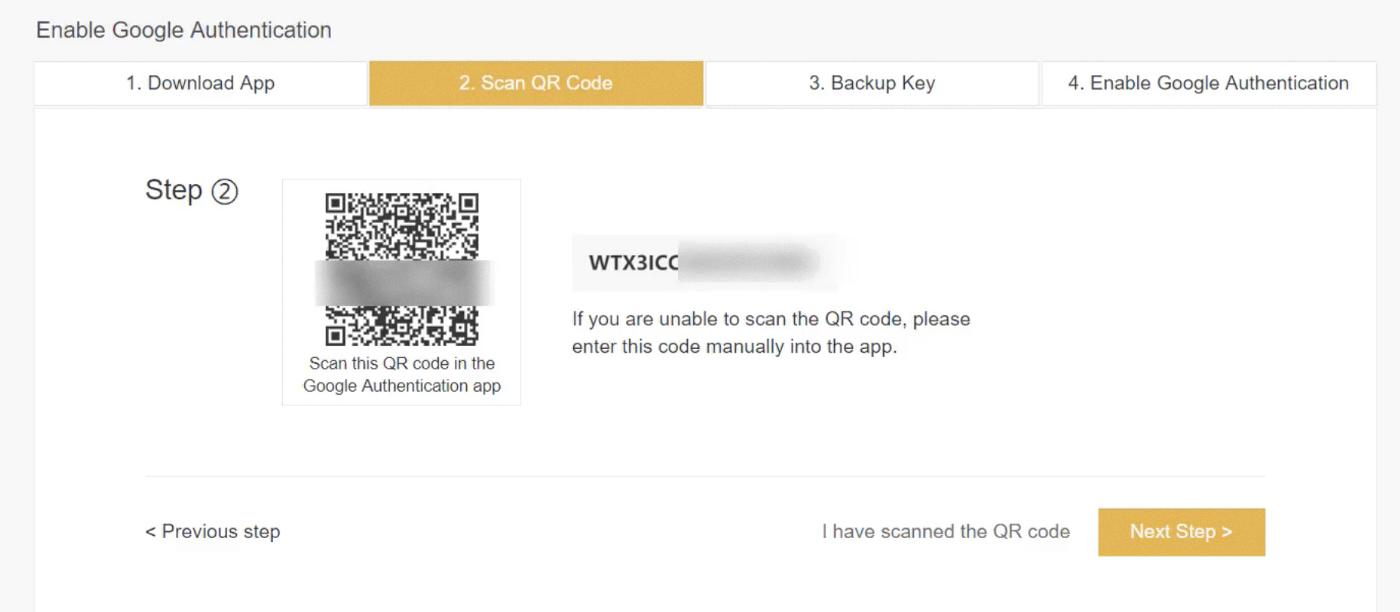Google Authenticator is a very important tool for those who use two-factor authentication (2FA) to secure thir online accounts. It’s a free mobile app that generates time-based one-time passwords (TOTPs) to verify your identity when logging into websites and services. However, it’s important to remember that using Google Authenticator also comes with certain risks.
That’s why it’s important to make sure you have a backup of your Google Authenticator setup in case something happens to your device or account. Fortunately, setting up a backup for Google Authenticator is easy and can be done in just a few simple steps.
The first step is to download and install the Google Authenticator app on your new device. Once installed, open the app and select “Set up account” from the menu. You will then be prompted to enter the secret key of your existing Google Authenticator setup. This key can be found in your account settings on the website or service where you originally set up 2FA.
Once you’ve entered this information, you will see a code displayed on your new device which you must then enter into the website or service whee you originally set up 2FA. This code verifies that you are indeed the legitimate owner of both devices, thus creating a secure backup of your Google Authenticator setup.
It is also worth noting that while this process creates a secure backup of your Google Authenticator setup, it does not back up any existing codes generated by the original device – these will stll need to be manually re-entered on each website or service as required.
Finally, if you ever find yourself in need of restoring access to an account protected by 2FA using Google Authenticator, all you need to do is follow these steps again with your backup device and enter the code displayed onscreen into the website or service where you originally set up 2FA.
In conclusion, backing up your Google Authenticator setup is an extremely important part of keeping access to accounts protected by 2FA safe and secure – so make sure not to forget it!
Backing Up Google Authenticator
Yes, you can back up your Google Authenticator app. You can do this by transferring your accounts to a new phone using a QR code generated from the Authenticator app. First, install the Google Authenticator app on your new device. Then, open the app and select “Get started.” From here, you can scan the QR code from your old device to transfer all of your accounts to the new one. This will ensure that all of your accounts are backed up in case something happens to your old device.

Source: alpisik.medium.com
What to Do if You Have Lost Your Google Authenticator
If you have lost your Google Authenticator, you can easily get a new one. First, go to the 2-Step Verification section of your Google Account. Once in this section, select the “Show codes” option. This will alow you to view any existing backup codes that you have setup in case of an emergency.
If necessary, you can revoke these codes and then select “Get new codes” to generate a new set of backup codes that can be used to gain access to your account if needed. You will then be able to use a new Google Authenticator with your account and begin using two-factor authentication again.
Retrieving a Google Authenticator Backup Code
Getting your Google Authenticator backup code is easy! First, go to your Google Account. On the left side, click on the Security tab. Under “Signing in to Google,” click on 2-Step Verification. You may need to sign in again at this point.
Once you have done this, scroll down and under the “Backup codes” section, click Continue. From here you can get your backup codes – simply click “Get backup codes”. You will then be provided with a set of codes that you can use as backups if you ever lose access to your phone or other authentication methods. It’s important to store these code somewhere safe and secure!
Getting a Backup Authenticator
In order to get a backup authenticator, you will need to first download an Authenticator app such as Google Authenticator or Microsoft Authenticator. Once the app is installed, you can open it and select Backup. You will then be asked to sign in with your Microsoft account. After signing in, you can create a backup of your authenticator information and store it in a secure location such as a password manager or cloud storage. You sould also make sure that the backup is encrypted with a strong password before storing it. Finally, you can use this backup to restore your authenticator information onto another device if your current device is lost or stolen.
Does iCloud Backup Google Authenticator?
Yes, iCloud backups are capable of storing Google Authenticator information. For example, if you have an iPhone and have enabled iCloud backups, then any data stored in your Google Authenticator app will be backed up to your iCloud account. This includes any two-factor authentication codes that you have used to access websites or services that require it. When restoring from an iCloud backup, your Google Authenticator data will be restored as well.

Source: youtube.com
Exporting Google Authenticator
To export Google Authenticator, first open the app on your old device. Tap the thre dots in the top right corner and select “Transfer Accounts”. Choose which accounts you would like to transfer, then tap “Next”. On your new device, install Google Authenticator and open it. Tap the three dots in the upper right corner and select “Transfer Accounts” again. Select “Import Accounts” and enter the code generated by your old device to complete the transfer process.
Transferring Google Authenticator Code to a New Phone
To get your old Google Authenticator code on your new phone, you’ll need to create a QR code on your old iPhone. To do this, open the Google Authenticator app, then tap Get Started. At the bottom of the page, select Import existing accounts?. Then, on your old phone, create a QR code containing the authentication information.
On your new phone, open the Google Authenticator app and select Scan QR code. When you scan the QR code from your old phone, you’ll receive a confirmation that your Google Authenticator accounts have been transferred to your new device.
Locating My 8 Digit Backup Code
You can find your 8 digit backup code undr the 2-Step Verification section of your Google Account. To get there, open the Settings app on your Android phone or tablet, select Manage your Google Account, and then tap Security at the top. Under “Signing in to Google,” you’ll see the 2-Step Verification section. Tap that, and you should see a list of 8 digit backup codes.
Backing Up Google Authenticator Code on an iPhone
Backing up your Google Authenticator code on your iPhone is easy! First, open the Gmail app and tap Menu > Settings > your account name. Next, tap Manage Your Google Account, then tap Security at the top. Under “Signing in to Google”, tap 2-Step Verification. You may need to sign in at this point. Finally, uner “Backup codes”, tap Continue. From here you can create a set of backup codes that can be used in case you ever lose access to your original 2-Step Verification code. Once you have created your set of backup codes, make sure to store them securely or print them out and keep them in a safe place.
Conclusion
Google Authenticator Backup is an important security measure to ensure the safety of your online accounts. It allows you to store a backup of your authentication codes, which are used to access your accounts and verify your identity. This backup allows you to restore access to your accounts in the event that you lose access due to a lost or stolen device, or if your authenticator app malfunctions. With Google Authenticator Backup, you can rest assured that even if something goes wrong with your device, you can still keep control of your online accounts and maintain their security.








